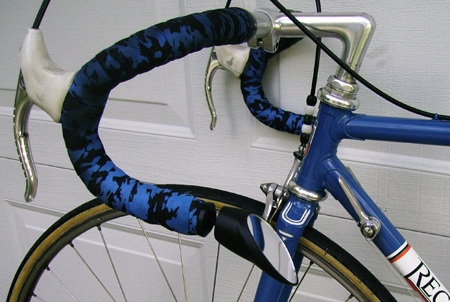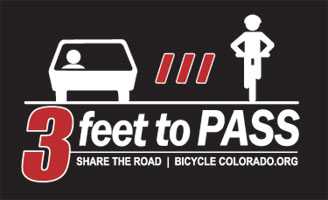A handy little road bike mirror
 Thu, August 5, 2010
Thu, August 5, 2010 
Being somewhat of an old skool purist, I am not inclined to hang a bunch of dorky shit on my bike.
However, I recently came across this little rear view mirror that fits in the end of the handlebars.
On a scale of 1 to 10, I would say this would rank at least an 8.5 on the acceptable side of dorkiness, but after using it for about a week, this mirror’s practicality far outweighs the small sacrifice to the pure aesthetics of my bicycle.
For years I have always felt that a rear view mirror on a road bike, ridden by an experienced rider, was totally unnecessary. To see what was behind me, I would simply turn my head.
However, I am no longer as young as my mind thinks I am. I am not as flexible; more important my eyesight is not what it used to be.
I need prescription glasses to see, and when I turn my head I am looking out of the side of my glasses and not through the lenses. The result is that everything in the distance is a blur.
For some time now I have relied on my ears to tell me if a car is passing and this still works well, but the car has to be pretty close, and often the noise of traffic in the opposing lane makes it hard to distinguish a car behind.
This rear view mirror gives me a visual check as to what is going on. If there is nothing coming I am riding about a third of the way out into the lane.
On seeing a car approach from the rear I move over to the right. It seems to me that drivers, having seen me out in the lane, will aim to pass me where I was originally, thereby giving me more room. Other cars following tend to play follow the leader and also swing wide.
Yesterday on my ride I rode about a two mile stretch on a normally busy road, and nothing came past me. It was a great feeling of freedom, to be out there on the smoothest part of the road, knowing it made no difference to other road users, as there was no one behind me.
Being out in the lane means that I am more visible to those ahead of me; people about to make a left turn across in front of me, and those waiting to pull out from side streets and driveways. It is these hazards that come from those in front of a cyclist that are still the biggest threat.
Which brings me to another point; having just got this mirror, like a kid with a new toy I had to be careful I was not paying more attention to my rear, than to what was going on ahead.
I should also point out that it is still a good idea to look over your shoulder and give a hand signal when changing lanes to make a left turn. The looking behind you is a signal in itself that you are about to do something.
 From a design standpoint, I can see that the makers of this mirror have gone for an aerodynamic look.
From a design standpoint, I can see that the makers of this mirror have gone for an aerodynamic look.
The ball that allows adjustment is inside the rubber plug that fits in the handlebar, therefore the plastic housing could have been at least 5/8 inch (1.6 cm.) shorter.
Also, I would have liked to see the convex mirror round instead of egg shaped. (Giving a less distorted image.)
In my view the designers in an attempt to make this less dorky, have somehow increased its dorkiness; these changes would definitely make it more practical. There is a tendency to bump it with your leg when dismounting; not that this is a big deal, it is easily adjustable.
This mirror called “The Roadie” is available from CycleAware for $20 plus shipping.
I must add that I was not paid for this endorsement; I just thought this could be a product that you might find useful.

























Watch out for the left cross
University of Iowa football player Josh Koeppel miraculously escaped serious injury when the driver of a pickup truck made a left turn in front of him at an intersection.
Koepple’s motorcycle slammed into the front of the truck, and he was thrown into the air, landing on his side in the roadway. It appears in the video that he never made bodily contact with the truck which was fortunate.
This type of accident, (For want of a better word.) is one of the most common causes of serious injury and death to both cyclists and motorcyclists.
The driver of the white pickup truck does not even slow as he makes the left turn, and will no doubt plead that he didn’t even see the motorcycle and rider.
While not excusing this act of gross negligence, it is probably true the driver didn’t see the approaching motorcycle. Watch the video a second time and you will notice a black car, followed by a light colored car waiting to turn left in the opposite direction.
Josh Koeppel was probably hidden from view behind these vehicles as he and the white truck approached the intersection, giving the driver the impression the road was clear, which is why he doesn’t even slow.
Once he starts the turn he is now looking in the direction he is traveling, no longer looking for oncoming traffic.
It behooves the cyclist or motorcyclist to look for vehicles in the center lane making a left turn. (A right turn in the UK.) Assume the driver has NOT seen you, rather than assume he has.
I wrote about this very scenario previously